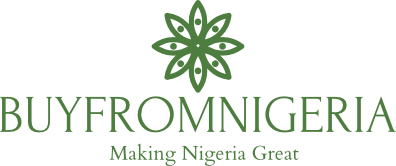Are you looking for a path to financial freedom? Have you considered the untapped potential of yam farming? In this blog post, we will explore why yam farming could be the key to unlocking your financial dreams. Whether you’re a seasoned farmer or someone looking for a new venture, yam farming offers numerous benefits and opportunities that can lead you to prosperity.
Yam, a versatile and nutritious crop, has a rich history and cultural significance in many regions around the world. Not only is yam a staple food for millions of people, but it also holds immense market value due to its demand in various industries. By delving into the realm of yam farming, you can tap into a lucrative market and pave your way toward financial freedom.
Join us as we delve into the world of yam farming and explore its profitability, market opportunities, and the steps you can take to start your yam farm. Discover the success stories of farmers who have turned yam farming into a thriving business and learn about the government support and initiatives available in this sector.
If you’re ready to explore an exciting agricultural venture that can transform your financial future, then keep reading. Yam farming may just be the golden ticket you’ve been searching for.
Overview of Yam Farming
A. Understanding Yam:
The Versatile Crop with Cultural Significance
Yam, scientifically known as Dioscorea, is a starchy tuberous root vegetable that belongs to the Dioscoreaceae family. This crop has been cultivated for centuries and holds significant cultural importance in many regions, particularly in Africa, Asia, and the Caribbean. It serves as a dietary staple for millions of people and plays a vital role in traditional ceremonies and festivals.
B. Nutritional Value and Market Demand:
Yam is not only culturally significant but also highly nutritious. It is rich in carbohydrates, dietary fiber, vitamins (such as vitamin C and B-complex vitamins), and minerals (including potassium, manganese, and copper). Its low fat and cholesterol content make it a healthy food choice.
Moreover, the market demand for yams is consistently high due to its versatile nature. It is used in various culinary preparations, such as stews, soups, fries, and desserts. Additionally, yam-based products like flour, chips, and noodles are gaining popularity worldwide. The increasing demand for healthy, gluten-free, and plant-based alternatives further boosts the market prospects of yam.
C. Historical Significance and Cultural Importance
Yam farming has deep roots in cultural traditions and folklore. In many societies, yam is associated with abundance, fertility, and prosperity. It holds symbolic value and is often used in rituals, celebrations, and religious ceremonies. The cultural significance of yam reinforces its market value and ensures a steady demand throughout the year.
Understanding the historical and cultural aspects of yam farming helps us appreciate its significance beyond its financial potential. By engaging in yam farming, you become a part of a rich heritage and contribute to the preservation of cultural traditions.
Benefits of Yam Farming
A. Profitability of Yam Farming Compared to Other Crops
Yam farming presents a compelling case when it comes to profitability. Compared to other crops, yam has the potential to generate higher returns on investment. The demand for yams, both domestically and internationally, remains consistently strong, offering farmers a reliable market to sell their produce. With proper planning and management, yam farming can yield substantial profits and serve as a sustainable source of income.
B. Lower Input Costs and Minimal Maintenance
One of the notable advantages of yam farming is its lower input costs and minimal maintenance requirements. Unlike some crops that demand extensive fertilisers, pesticides, and irrigation, yam cultivation often requires less intensive inputs. Yam plants are resilient and adaptable to various soil types, which can help reduce the need for costly amendments. Additionally, yam crops have lower pest and disease susceptibility compared to other crops, decreasing the expenses associated with pest management.
C. High Yield Potential and Fast Growth Cycle
Yam farming offers an attractive yield potential. With proper cultivation techniques and favourable growing conditions, yam crops can produce a significant quantity of tubers per unit area. This high yield potential means that yam farmers can achieve greater output and, consequently, higher profits.
Yam has a relatively fast growth cycle compared to many other crops. Depending on the variety, yam can be harvested within 6 to 12 months after planting. This shorter turnaround time allows farmers to generate income more quickly, making yam farming an appealing option for those seeking a faster return on investment.
Market Opportunities for Yam
A. Domestic and International Market Demand
The market demand for yam continues to grow both domestically and internationally. In many countries, yam is a staple food, consumed on a regular basis by a large portion of the population. This consistent demand ensures a steady market for yam farmers, allowing them to sell their produce at favourable prices.
Moreover, yam has gained popularity in international markets due to its nutritional value and versatility in culinary applications. The global interest in healthy and diverse food options has opened up lucrative opportunities for yam farmers to export their produce. Countries with diaspora populations from yam-consuming regions also have a strong demand for yam, further expanding the market potential.
B. Value-added Products from Yam
Yam offers exciting prospects for value-added product development. Beyond selling fresh yam tubers, farmers can explore various processing options to diversify their product range. For instance, yam flour, which is used in gluten-free baking and as a thickening agent, has gained popularity as a healthier alternative to wheat flour. Other potential value-added products include yam chips, yam noodles, and yam-based baby food. By tapping into the value-added market, yam farmers can increase their profitability and reach a broader consumer base.
C. Increasing Popularity of Yam-based Dishes Globally
Yam’s versatility in the kitchen has contributed to its rising popularity worldwide. From yam fries and roasted yam to yam porridge and yam-based curries, the culinary world is embracing the unique flavours and textures of yam. Food enthusiasts, chefs, and health-conscious consumers are actively seeking out yam-based dishes, presenting an opportunity for yam farmers to cater to this growing demand. By aligning their production with the culinary trends, yam farmers can tap into niche markets and capture the attention of a diverse customer base.
Financial Opportunities with Yam Farming

A. Lucrative Business Venture
Yam farming presents an excellent opportunity for aspiring entrepreneurs and farmers looking to establish a lucrative business venture. The consistent demand for yam, coupled with its profitability, makes it an attractive investment option. By strategically planning your farm operations, optimising yields, and exploring market channels, you can generate substantial income through yam farming.
B. Multiple Income Streams
Yam farming offers various income streams that can contribute to your financial freedom. As a yam farmer, you have the option to sell your produce directly to consumers, participate in farmers’ markets, or establish partnerships with local grocery stores and restaurants. Additionally, wholesale distribution and export opportunities allow you to reach wider markets and potentially secure higher prices for your yam produce. By diversifying your income streams, you can enhance your financial stability and increase your chances of success.
C. Success Stories of Yam Farmers
Numerous success stories serve as inspiration for individuals considering yam farming. From small-scale farmers who have transformed their operations into thriving businesses to large-scale enterprises that have established themselves as key players in the industry, there are many examples of individuals who have achieved financial freedom through yam farming. These success stories highlight the potential of yam farming to create a pathway toward prosperity and motivate aspiring farmers to embark on their own journey.
By leveraging the financial opportunities associated with yam farming, you can establish a sustainable business model that generates consistent revenue and facilitates long-term financial growth. However, it is essential to approach yam farming with proper planning, knowledge, and dedication to maximise your chances of success.
In the next section, we will outline the steps you can take to start your own yam farm and provide guidance on cultivation techniques and best practices to set you on the path to financial freedom.
Steps to Start a Yam Farm
A. Assessing Requirements for Starting a Yam Farm
Before diving into yam farming, it’s crucial to assess the requirements and resources needed to establish a successful farm. Consider factors such as available land, soil quality, and access to water sources. Yam crops thrive in well-drained soils with a pH range of 5.5 to 7.0. Adequate sunlight and sufficient rainfall or irrigation are also essential for optimal growth.
B. Seed Selection and Preparation
Selecting high-quality yam seeds is vital for a productive harvest. Look for disease-free and pest-resistant varieties that are well-suited to your local climate. Acquire seeds from reputable sources or consider cultivating your own seedlings through vine cuttings. Prepare the seeds by treating them with fungicides or biocontrol agents to minimise the risk of diseases.
C. Cultivation Techniques and Best Practices
Yam cultivation involves several essential practices to ensure successful growth. Begin by preparing the land through ploughing or tilling to loosen the soil and remove any weeds. Create ridges or mounds to improve soil drainage and prevent waterlogging. Plant the yam seeds or vine cuttings in the ridges, ensuring proper spacing between plants.
Implement proper weed control measures, such as manual weeding or the use of herbicides, to maintain a weed-free environment for the yam crops. Adequate irrigation is crucial, especially during dry spells, to promote healthy growth. Monitor the crops regularly for pests and diseases, and take necessary steps for prevention and control.
D. Harvesting and Post-Harvest Handling
Yam crops are typically ready for harvest when the leaves turn yellow and begin to wither. Carefully dig out the tubers using a fork or spade, being cautious not to damage them. After harvesting, allow the tubers to dry for a few hours to facilitate healing and reduce the risk of rot during storage.
Proper post-harvest handling is essential to maintain the quality and market value of yam. Clean the tubers and remove any soil or debris. Store them in a cool, dry, and well-ventilated area with proper ventilation to prevent spoilage. Regularly inspect the stored yam for any signs of rot or deterioration.
E. Pest and Disease Management
Yam crops can be susceptible to various pests and diseases, including nematodes, beetles, and fungal infections. Implement integrated pest management strategies, such as crop rotation, the use of resistant varieties, and the application of organic or chemical pesticides when necessary. Regularly monitor the crops for signs of infestation and take prompt action to mitigate the damage.
By following these steps and implementing best practices in yam farming, you can set a strong foundation for a successful venture. Continuously educate yourself on new techniques and stay updated on advancements in yam farming to optimise your production and maximise profitability.
In the next section, we will explore the potential challenges and risks associated with yam farming and provide strategies to overcome them.
Challenges and Risks of Yam Farming
A. Potential Challenges in Yam Farming
Yam farming, like any agricultural endeavour, comes with its own set of challenges. It’s important to be aware of these challenges and develop strategies to overcome them. Some common challenges in yam farming include:
1. Pest and Disease Management:
Yam crops can be susceptible to pests like nematodes, beetles, and fungal infections. Implementing effective pest and disease management strategies, such as regular monitoring, crop rotation, and proper sanitation, can help mitigate these risks.
2. Climate and Weather Conditions:
Extreme weather events, such as droughts, floods, or prolonged periods of rainfall, can adversely affect yam crops. Implementing irrigation systems, utilising mulching techniques, and selecting suitable yam varieties can help mitigate the impact of adverse weather conditions.
3. Storage and Post-Harvest Losses:
Proper post-harvest handling is crucial to prevent spoilage and minimise post-harvest losses. Adequate storage facilities, proper drying techniques, and regular inspection of stored yams can help mitigate these risks.
B. Strategies to Overcome Challenges
To overcome the challenges in yam farming, consider implementing the following strategies:
1. Knowledge and Skill Enhancement:
Stay updated on the latest research and developments in yam farming techniques. Attend workshops, training programs, and connect with experienced farmers to enhance your knowledge and skills.
2. Crop Rotation and Diversification:
Implementing crop rotation practices can help break pest and disease cycles, reducing the risk of infestations. Diversify your farming practices by growing other complementary crops alongside yam to improve soil fertility and overall farm resilience.
3. Partnership and Collaboration:
Engage in partnerships and collaborations with agricultural experts, local farmers, and research institutions. This can provide access to valuable resources, knowledge sharing, and support networks that can help overcome challenges.
4. Insurance and Risk Management:
Consider obtaining crop insurance or exploring risk management strategies to mitigate potential financial losses due to unforeseen events or crop failures.
By proactively identifying and addressing the challenges in yam farming, you can minimise risks and improve the overall resilience and profitability of your farm.
Government Support and Initiatives
A. Government Programs for Yam Farmers
Governments around the world recognize the importance of agriculture, including yam farming, and often offer various support programs and initiatives to assist farmers. These programs aim to provide financial assistance, technical guidance, and resources to promote sustainable agricultural practices and enhance the profitability of farming ventures. Some common government support programs for yam farmers include:
1. Agricultural Subsidies:
Governments may provide subsidies on inputs such as fertilisers, seeds, and irrigation equipment, reducing the financial burden on farmers and encouraging increased production.
2. Farm Credit and Loans:
Financial institutions often partner with governments to offer affordable credit and loans specifically tailored for farmers. These financial services can help farmers access capital for land purchase, equipment investment, and other farming expenses.
3. Technical Assistance and Training:
Governments may organise training programs and workshops to enhance farmers’ skills and knowledge in yam farming techniques, pest management, post-harvest handling, and market access. These initiatives equip farmers with the necessary expertise to optimise their farming practices.
B. Agricultural Research and Development Institutions
Many governments also support agricultural research and development institutions that focus on crop improvement, disease management, and innovation in farming practices. These institutions collaborate with farmers, provide access to improved varieties, and offer technical guidance to enhance productivity and sustainability in yam farming.
C. Market Access and Export Promotion
Governments often play a pivotal role in facilitating market access and export promotion for agricultural products, including yam. They may establish trade agreements, provide market information, and offer logistical support to help farmers access local and international markets. These initiatives expand the market opportunities for yam farmers, allowing them to reach a wider customer base and potentially secure higher profits.
It’s important for Yam farmers to stay informed about government support programs and initiatives available in their respective regions. Local agriculture departments, extension services, and government websites are valuable sources of information for accessing these programs.
Conclusion
Yam farming presents a compelling opportunity for individuals seeking financial freedom. The profitability of yam farming, combined with its lower input costs and minimal maintenance requirements, makes it an attractive venture for aspiring entrepreneurs and farmers. With its high yield potential and relatively fast growth cycle, yam farming offers a path to generating substantial income within a shorter timeframe.
While yam farming may come with challenges, such as pest and disease management and weather-related risks, proactive strategies can help mitigate these obstacles. Through knowledge enhancement, crop diversification, collaboration, and risk management, farmers can overcome challenges and build resilient and profitable yam farming enterprises.
So, if you’re looking for a pathway to financial freedom, consider yam farming as your key to success. With its profitability, market opportunities, and government support, yam farming offers a promising journey towards prosperity.
Take the first step, educate yourself, and start planning your own yam farm. By embracing the challenges, seizing the opportunities, and dedicating yourself to the art of yam farming, you can pave your way to financial freedom and enjoy the rewards of a thriving agricultural business.
Remember, the key to financial freedom lies within your grasp, and yam farming can unlock the door to a prosperous future.












